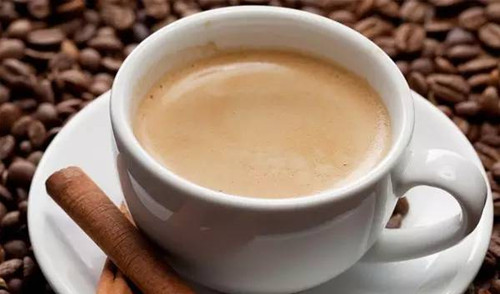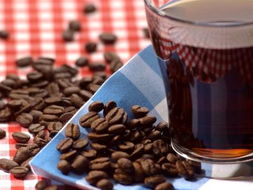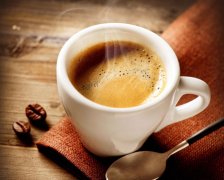Make a cup of original "lazybones boutique coffee". How do lazy people make coffee? Boutique coffee

Follicle coffee seems to be the most easily regarded as "unlearned" coffee. Some people nicknamed it "lazy coffee" (probably because there are the least utensils to clean after making a cup of coffee). Because it doesn't have to go through a sophisticated machine (such as an Italian coffee maker), nor does it seem to use any special equipment (such as a siphon pot or a mocha pot). But if you use these "look" ideas to make a cup of follicular coffee. You are so wrong, and you'd better not expect too much of that cup of coffee.
Step 1: fold filter paper-take a piece of filter paper to spread out, first check whether the filter paper is broken or soiled, if there is moisture, it is best not to use it, so as not to waste the raw materials of a cup of coffee. First press the side of the filter paper forward or backward about the width of the joint edge. Then the month then folds the funnel of the filter paper in the opposite direction (backward or forward). Finally, spread the filter paper into a funnel by hand, put it in the filter and stick it close to the filter.
Step 2: calculate on the basis of 1215g coffee powder per cup of coffee. Put the right amount of coffee powder into the filter paper. For the fineness of coffee powder grinding, please refer to the chapter on coffee grinding. Pick up the filter. Tap the filter on the edge of the palm to make the coffee powder denser because of vibration. Carefully place the coffee powder and the filter on the filter pot.
Step 3: prepare water: as with other coffee making methods, it is best to use normal filtered water, calculate the amount of water at about 180ml per cup, and boil the water on the stove until it boils at 100C.
Step 4: in the process of waiting for the water to boil. You can pour a small amount of hot water into the coffee pot, shake the filter pot, and then pour out the water to warm it. After warming the pot, we put the coffee powder and filter we have just shot on the filter pot, and all the pre-preparations are completed.
Step 5: cool down for the first time: fold the pre-prepared towel into a square, wet it with cold water, put it on a kettle that has been boiled and taken away from the stove, drop for 20 seconds and 30 seconds, and lower the water temperature to about 92 ℃ (the time can be controlled by a small clock. You can also use a cooking thermometer to measure the temperature.
Steaming: wet the coffee powder with cooled water and a very fine flow. The current starts at the center of the filter and spirals outward. The thinner the better, but the thickness should be stable and uninterruptible. The best amount of water is just wet and drenched all the coffee powder. At this time, the coffee powder will absorb and expand forever. In professional terms, this process is called steaming.
Step 6: keep warm. Put the filter pot on the stove to protect the plate. In addition, the coffee should be kept warm in the filter pot so as not to affect the taste of the coffee after cooling. The second cooling, after steaming, put the kettle on the wet towel to cool down, about 20 to 30 seconds, so that the water temperature dropped to about 85 ℃.
Step 7: brew: start injecting water from the center of the filter. Rotate outward from the center in the same direction, the flow can be a little thicker than when steaming, and it should be uniform and uninterruptible. The amount of water is one cup, about 150-180 milliliters.
After rotating the amount of water injected into the cup, the water level reaches the edge of the filter, and finally the water is injected in the middle. Complete the perfect brewing. The finished coffee is about a little more than the cup (brewing plus the amount of water collected). This is to leave some of the finished work for the brewer to try. When it is finished. The coffee powder left behind will form a beautiful semi-oval surface on the filter paper.
Important Notice :
前街咖啡 FrontStreet Coffee has moved to new addredd:
FrontStreet Coffee Address: 315,Donghua East Road,GuangZhou
Tel:020 38364473
- Prev

Colombia Coffee Benefits Colombia Coffee Flavor Features Colombia Coffee
Cafe de Colombia, produced in Colombia, is one of the few single-origin coffees sold worldwide under its name. In terms of quality, it has earned accolades that no other coffee can match. Colombia is more concerned with product development and production promotion than other producing countries. It is this, coupled with its superior geographical and climatic conditions, that makes
- Next

Several secrets of "lazybones boutique coffee" what is the secret of lazybones boutique coffee? High-quality goods
Tip-1: it is best to choose the water that boils for the first time, rather than boil it again with cold boiled water and do not use the boiling water that has been kept warm for some time in the electric thermos. Tip-2: some readers may wonder why it is so difficult to boil the water. The purpose of using a towel to cool down the fork is to prevent coffee oranges from touching directly with boiling water and being scalded by boiling water, affecting the aroma and taste of coffee.
Related
- Detailed explanation of Jadeite planting Land in Panamanian Jadeite Manor introduction to the grading system of Jadeite competitive bidding, Red bid, Green bid and Rose Summer
- Story of Coffee planting in Brenka region of Costa Rica Stonehenge Manor anaerobic heavy honey treatment of flavor mouth
- What's on the barrel of Blue Mountain Coffee beans?
- Can American coffee also pull flowers? How to use hot American style to pull out a good-looking pattern?
- Can you make a cold extract with coffee beans? What is the right proportion for cold-extracted coffee formula?
- Indonesian PWN Gold Mandrine Coffee Origin Features Flavor How to Chong? Mandolin coffee is American.
- A brief introduction to the flavor characteristics of Brazilian yellow bourbon coffee beans
- What is the effect of different water quality on the flavor of cold-extracted coffee? What kind of water is best for brewing coffee?
- Why do you think of Rose Summer whenever you mention Panamanian coffee?
- Introduction to the characteristics of authentic blue mountain coffee bean producing areas? What is the CIB Coffee Authority in Jamaica?

